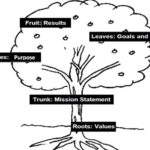Effective problem solving is a prerequisite for organisations to reach their goals. If any organisation fails to identify problems correctly or fails to resolve them properly, almost everything can be adversely affected. If organisations like churches or para-church ministries fail to identify problems effectively, the consequences can be dramatic and damaging long term.
The problem solving process
Perhaps the first “rule” of good problem solving is that it is an active process – one that is highly dependent upon asking questions, being curious, and being willing to admit you don’t know something. Effective problem solving involves stepping out of your comfort zone and actively pursuing answers and information. Henry Ford said: Most people spend more time and energy going around problems than in trying to solve them. This reinforces the same point – problem solving is an active, rather than a passive or even avoidant activity. Rarely will you experience someone coming to you with the answer you are looking for – you have to go after it yourself, asking good questions wherever you can.
Problem solving is the process of moving toward a goal when the path to that goal is apparently blocked or uncertain. We solve problems every time we achieve something without having known beforehand how to do so. We encounter simple problems every day: finding seemingly lost keys, deciding what to do when our car won’t start, even improvising a meal from leftovers. But there are also larger and more significant “ill-defined” problems, such as getting an education, having a successful career, and finding the most productive focus for my attention at work. Indeed, the most important kinds of human activities involve accomplishing goals without a script. In this ever-changing, dynamic world we now live in, we might justly say that problem-solving ability is a passport to the future.
Problem solving tools
Although we can approach problem solving armed with just an open mind and lots of well-targeted questions, the process is often greatly aided by using a problem solving tool or technique. This is not to say that all situations will require the use of a formal problem solving technique but these can be very helpful. There are many different problem solving tools available but here are three popular ones:
- Flowcharts. Flowcharts involve creating a model that illustrates and analyses the overall flow of activities. These “flows” are usually lines and shapes on a piece of paper that represent process steps in sequence or in order. The beauty of such charts when they are complete is that they illustrate where opportunity may exist to improve an overall process or function or to solve a problem in a creative or different way.
- Fishbone diagrams or cause and effect diagrams (also called Ishikawa diagrams). A common use of the Fishbone is to identify desirable factors leading to an overall outcome. This cause-and-effect diagram can reveal key relationships and possible causes that provide additional insight into a process. Causes in a typical diagram are normally arranged into categories.
- “Multiple why” charts. This is a relatively simple process in which you take a problem or challenge statement and plot it on a “multiple why” chart, tracing the problem back to its root causes, a technique used in quite a sophisticated way in some organizations (called root cause analysis).
Despite the fact that there are many techniques other than the three described here, learning to use one, two or all three of these is likely to assist greatly in dealing with many day-to-day problems. With practice, individuals can then research and start to use other techniques and become expert contributors whenever a major problem needs to be addressed.

Colin Noyes is the Director of ResourceZone International. He has thirty years of ministry experience as a pastor, college lecturer and consultant/coach to consultants, denominational leaders and local church pastors.




Comment here